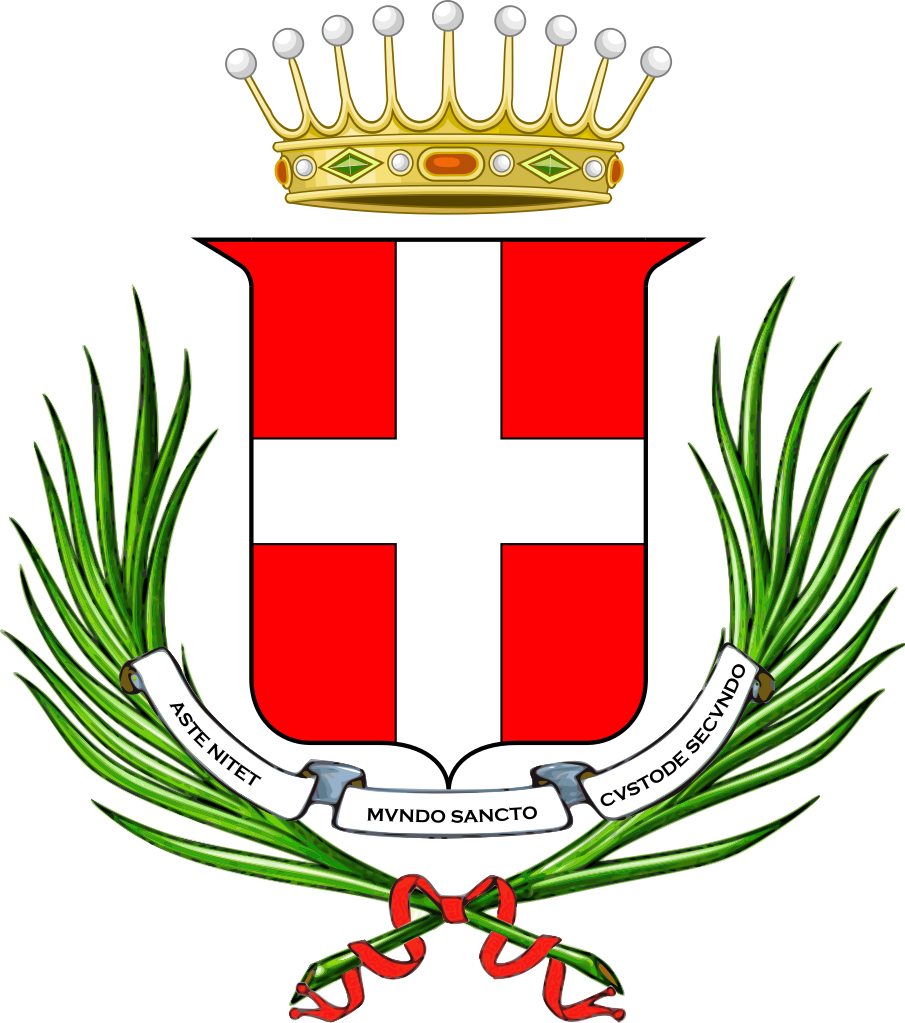
History and Territory.
Between Langhe and Monferrato
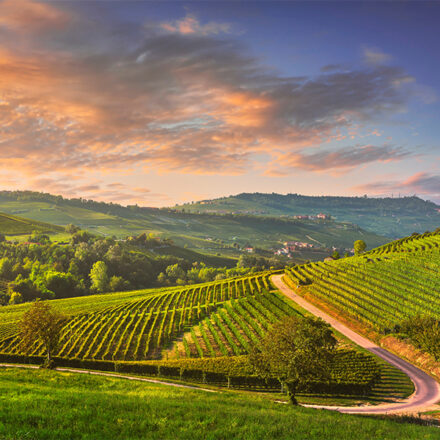
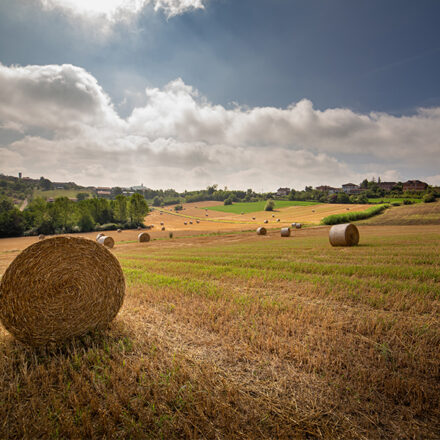
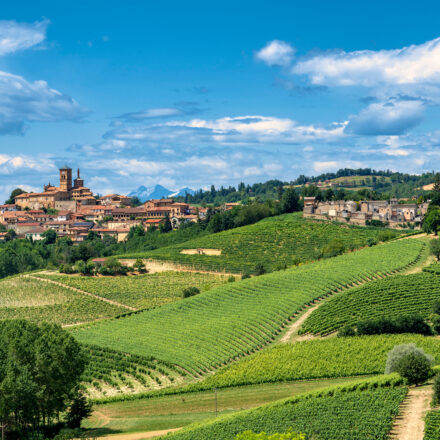
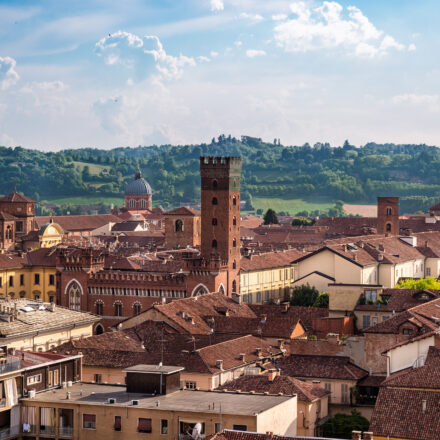
Asti is located in the heart of Monferrato, lying on the left bank of the Tanaro river, at the confluence with the Borbore stream. An area in the shape of a bunch of grapes, which extends between the beautiful hills of Astesana, among the enchanting wine-growing landscapes that in 2014 obtained the prestigious Unesco recognition by being declared – together with Langhe and Roero – a World Heritage Site.
The territory north of the Tanaro river includes the area known as Basso Monferrato, with gentle hills and a landscape of crops, vineyards, and woods, while to the south of the river is the Alto Monferrato, with higher hills and a more massive presence of vineyards. Further south, we find Langa Astigiana, crossed by the Bormida river where the reliefs approach the Apennines and the Ligurian Alps.
Places to be discovered slowly, alternating outdoor excursions, cultural visits to museums, castles and towers, stops in wine cellars, pleasant sports activities, wellness treatments and shopping, and then concluding the day in one of the many restaurants where you can taste dishes and wines of the very rich food and wine heritage.
Among the hills of Asti, you will find a warm welcome. Cozy hotels full of charm, charming holiday farmhouses, or bed & breakfasts await you for a unique experience, in the name of relaxation and originality. Nothing here is built to amaze, the beauty of these lands is to be found in the authenticity of its products, in the harmony of its landscape and in the passion that people express in welcoming and hosting, a tradition that has always lived here.
Its Origins and Important Medieval Past
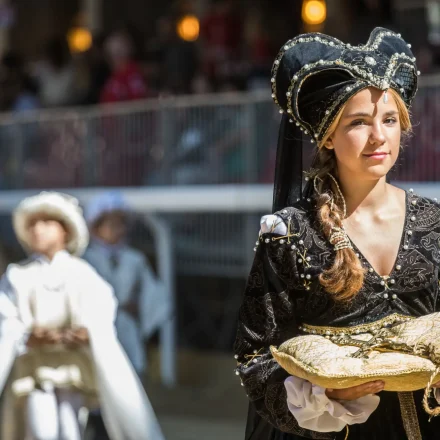
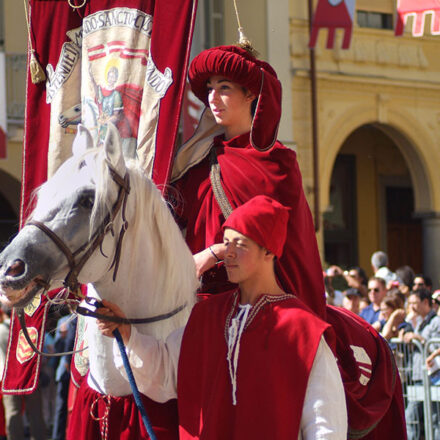

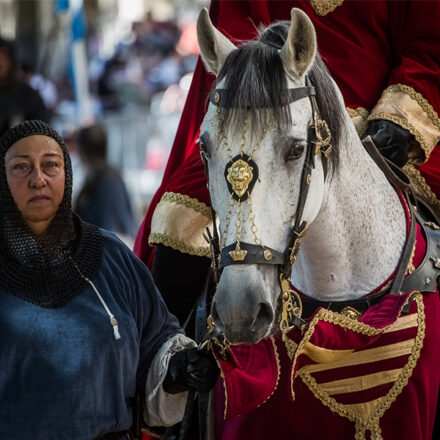
Founded by the Ligurians at the confluence of the Borbore stream with the Tanaro river, Ast (i.e., “elevated place”) kept its dimensions small until 89 BC, when it was colonized by the Romans with the name of Hasta.
The Romans built Via Fulvia (traced today by Corso Alfieri), and transformed its features of a small rural village by erecting the first public buildings.
The city of Hasta, equipped with monumental walls and gates of which the Red Tower is today the most consistent testament, grew despite the incursions of the Barbarians. Here, the Lombards established the seat of a duchy in 589, and the Franks established a committee in 774. It was subsequently governed by the bishops until 1095, when it became a free Municipality.
It reached its heyday in the 12th century, thanks to the thriving commercial and banking activity of some families (Troya, Solaro, Malabayla, Alfieri, Falletti, De Regibus, Guttuari, Roero, Asinari, Natta, Pelletta) who built their own towers and palaces with celebratory intent as a symbol of Asti’s wealth. Numerous buildings, both civil and religious, were erected throughout the Middle Ages and the first centuries of the modern age. The city, in a strategic position between Genoa and the main markets of Northern Italy, initially distinguished itself in the trade of fabrics, then in financial activities on a European scale. The most important families were owners of “casane”, real exchange and loan agencies on the main European trading centers. Thanks to the proceeds from the lending activity, the free Municipality was enriched with public and private buildings. Iit was in this period of particular dynamism that the tradition of the Palio was established.
In the twelfth century, the city expanded and incorporated the populous villages along the streets of the Tanaro plain, as in the fourteenth century the heart of Asti, that is the area where the towers and fortified houses of the powerful local families gathered, bounded by ancient walls and defined as Recinto dei Nobili (Nobles’ Fence), it was enclosed by a new wall called Recinto dei Borghigiani (People’s Fence), of which no traces remain today).
Asti was torn apart by fierce civil fights between the Guelph and Ghibelline families, which took place mostly in the main squares and which over time caused the destruction and lowering of the “hundred towers” for which Asti had become famous (in 1682, the city counted still 125, but today there are twelve left).
Also in the fourteenth century, the Jewish community settled in the area, along the axis of Corso Alfieri, where the splendid Synagogue can still be admired today.
In 1312, Asti submitted first to the Anjou family and then, in 1387, to the Visconti family, who gave the city as a dowry to their daughter Valentina, wife of the Duke of Orleans (brother of Charles VI of France, from whom two kings of France were born). In 1531, the County of Asti was annexed by the Savoy, from whom it passed to the Kingdom of Italy.
The eighteenth century saw the awakening of building activity with remodeling and ex novo construction of the sumptuous palaces by the architect Benedetto Alfieri (1700-1767, cousin of Vittorio Alfieri), many fortified houses were modernized and the palaces built by Alfieri conferred a new look to the city center. Hiwever, the century of true renewal was the nineteenth century, which opened with the demolition of part of the medieval walls.
The beginning of the twentieth century saw the industrial growth of Asti, the result of its proximity to Turin and strong immigration from Southern Italy which, combined with the creation of the province (1935), almost doubled the number of the population.
Today the city maintains an urban fabric that bears witness to its rich and noble history. The towers and fortified houses, the medieval and Renaissance palaces, the characteristic streets of the historic center, and the religious buildings such as the majestic Cathedral are the setting for fascinating medieval re-enactments, as in the case of the Palio or Asti e Mercanti.
Heraldry, Hamlets and Districts
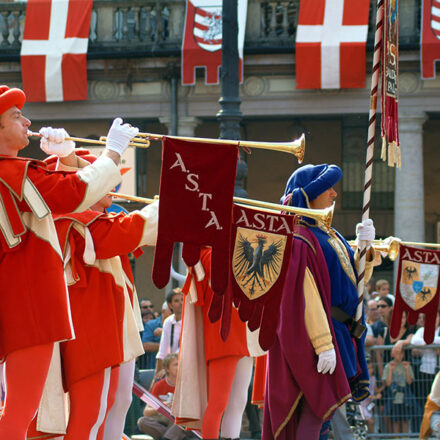
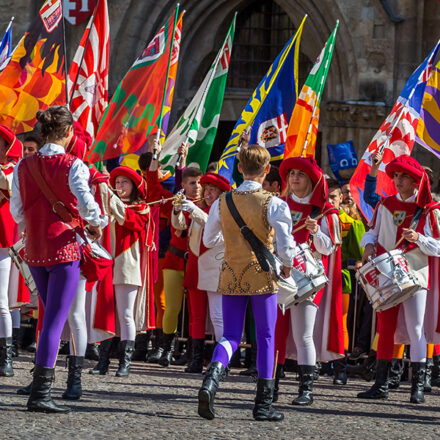
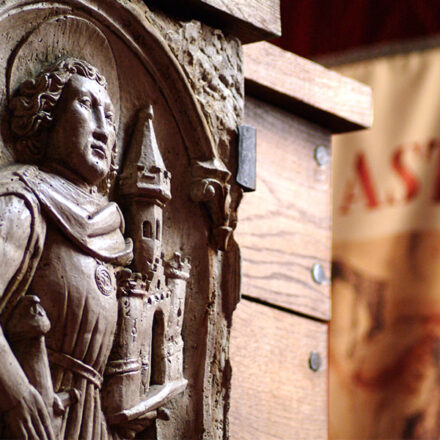
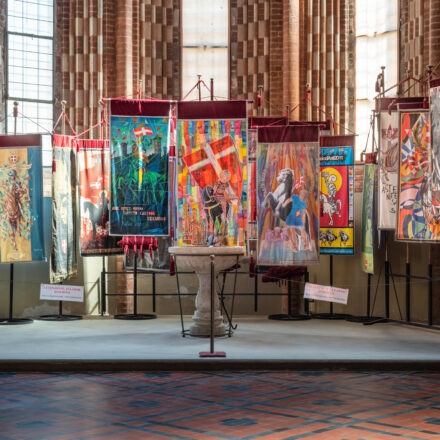
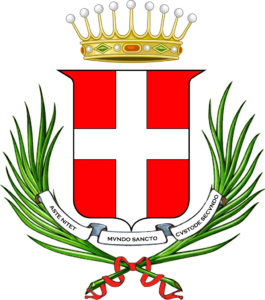
The coat of arms of Asti is a red shield with a white cross, stamped by a count’s crown topped with 16 pearls, 9 of which are visible, to which two palm branches are placed, decussed under the tip and tied by a red ribbon.
The city’s motto, in Latin, is shown under the coat of arms and reads “Aste Nitet Mundo Sancto Custode Secundo”, or “Asti shines in the world thanks to its Holy Guardian Saint Secundus.”
The coat of arms was recognized with an official act of July 5, 1896 by the Kingdom of Italy.
Asti is divided into 14 territories that refer to the parish competences of December 31, 1978, defined as Borghi (Hamlets) and Rioni (Districts).
The Rioni (districts) include the areas that in the Middle Ages were located within the first circle of the walls of Asti, called Recinto dei Nobili (Nobles’ Fence), which enclosed the heart of the city with the most important buildings, towers, and fortified houses of the noble families of Asti.
The Borghi (Hamlets) include the areas that in the Middle Ages were located within the second circle of the walls of Asti, called Recinto dei Borghigiani (People’s Fence), built following an urban increase, and the areas at the edges of the city.
7 – RIONE SANTA CATERINA
3 – RIONE CATTEDRALE
1 – RIONE SAN MARTINO SAN ROCCO
8 – RIONE SAN PAOLO
2 – RIONE SAN SECONDO
9 – RIONE SAN SILVESTRO
The Borghi (Hamlets) include the areas that in the Middle Ages were located within the second circle of the walls of Asti, called Recinto dei Borghigiani (People’s Fence), built following an urban increase, and the areas at the edges of the city.
5 – BORGO DON BOSCO
11 – BORGO SAN LAZZARO
14 – BORGO SAN MARZANOTTO
13 – BORGO SANTA MARIA NUOVA
6 – BORGO TANARO TRINCERE TORRAZZO
12 – BORGO SAN PIETRO
4 – BORGO TORRETTA N.S.L.
10 – BORGO VIATOSTO
Discover the history of Asti
- Wikipedia: Asti
- Wikipedia: Mura di Asti
- Wikipedia: Stemma di Asti
- Asti on Italia.it
- Visitlmr.it



